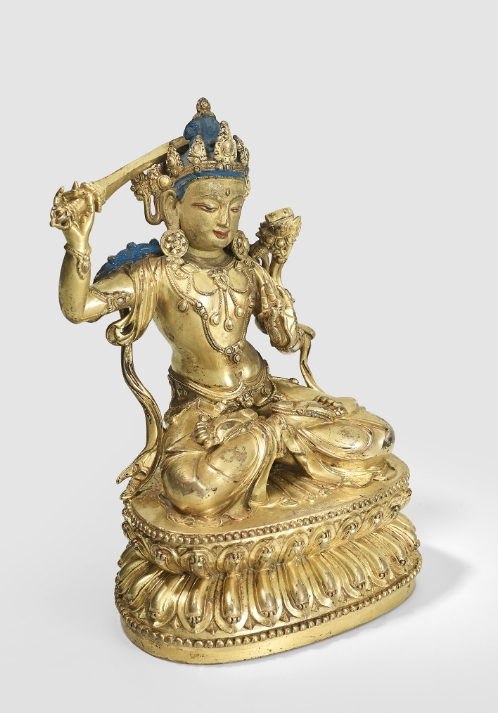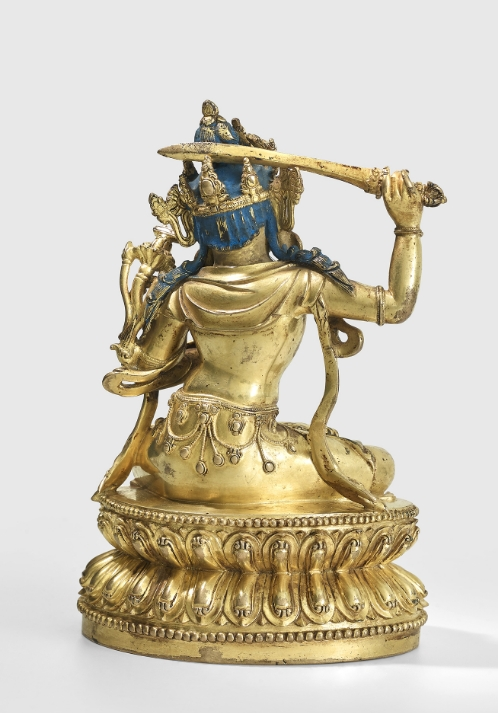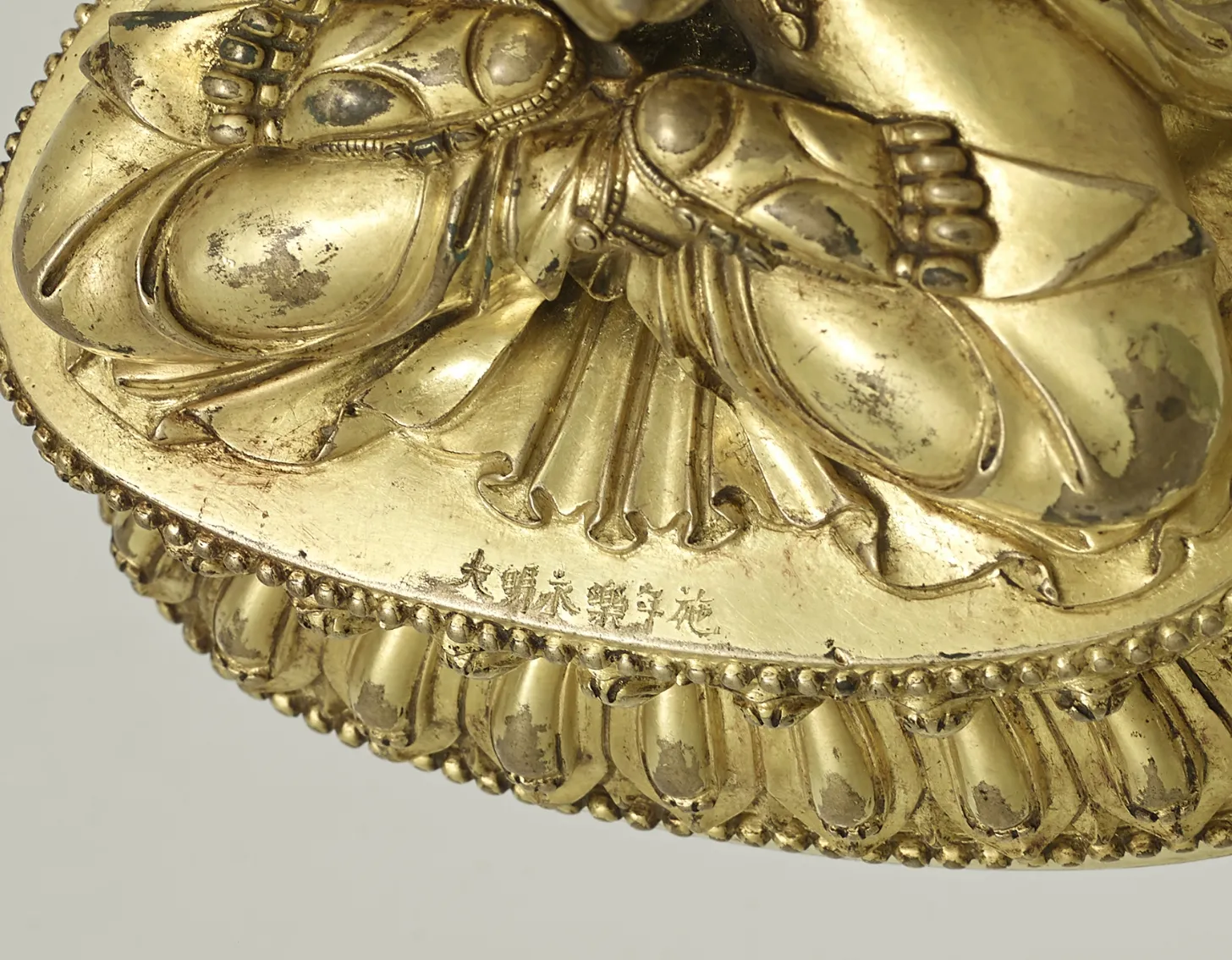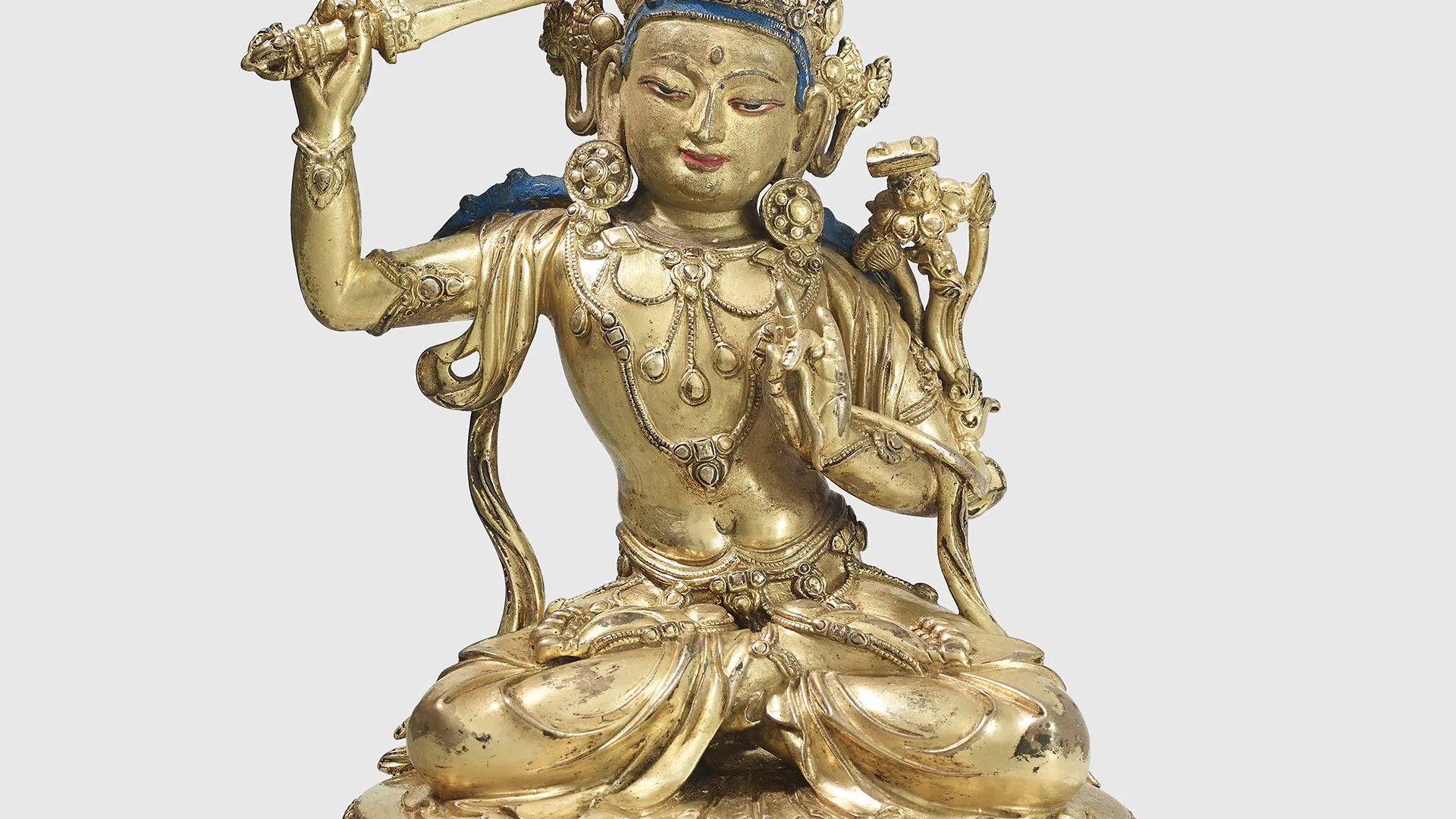There can be no mistaking Yongle-period sculptures, for they exhibit a unique precision and a distinctive style, beautifully represented in a sculpture of anjushri in this collection (cat. no. 24). The casting is to an exacting standard, finished just as beautifully on the back as on the front of the image (cat. no. 24.2). This sculpture, like most that were preserved in Tibet, has pigment on the face: golden skin, dark eyes outlined in red, red lips, dark brows, and blue hair, a practice that imparts life-like qualities to the face. Some Yongle sculptures are not painted and those presumably remained in China.
The mercury gilding, like all Yongle sculptures, is rich and lustrous, though slightly worn through handling over the centuries. Small areas that are proud of the rest—the convex curves of the lotus petals, the upper folds of the drapery, projecting parts of the jewelry, knees, and arms—all show natural wear. Likewise, the lotus-bearing book and the sword are bent slightly forward towards the head and shoulder from their original trajectories, another natural result of handling and use over the centuries.


The lotus petals of Yongle works are often like those seen in this sculpture, with some examples exhibiting a broader petal. Two rows of well-rounded beads enclose a single or double row of lotus petals for wrathful or peaceful images, respectively. The jewelry is fairly consistent throughout the group, with this example being representative of that for peaceful deities, and they are never inset with gems. Likewise, their baseplates are inscribed with a double thunderbolt (visvavajra), the design of which is fairly consistent throughout the corpus (cat. no. 24.3).
Yongle images range in size from 6.75 cm (a tiny Mahakala) to about 82 cm for complex lotus mandalas. The largest is that recently dentified in the Yonghegong Palace at approximately 2.5 meters.

